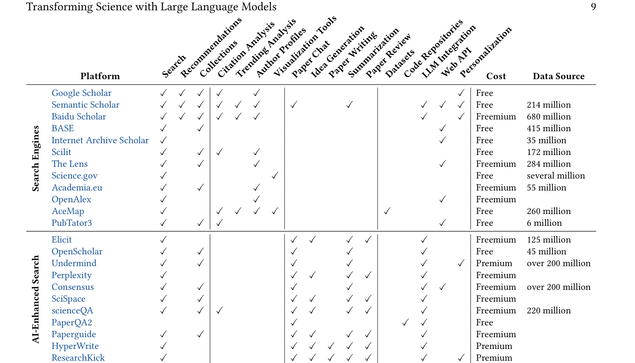"Transforming Science with Large Language Models: A Survey on AI-assisted Scientific Discovery, Experimentation, Content Generation, and Evaluation"
Wonderful paper I found from my IArxiv.org feed. It gives nice comparison between features of the leading AI search engines.
#research #Elicit #SciSpace #Undermind #OpenScholar #Perplexity #OpenAlex #Scilit
#AceMap #ConnectedPapers #CiteSpace #Consensus #SemanticScholar #Lens
#ResearchRabbit #Baidu
#notesumAI #ResearchTrend
#ORKG
